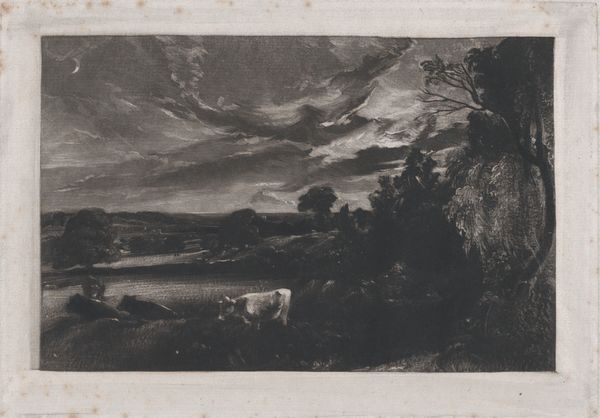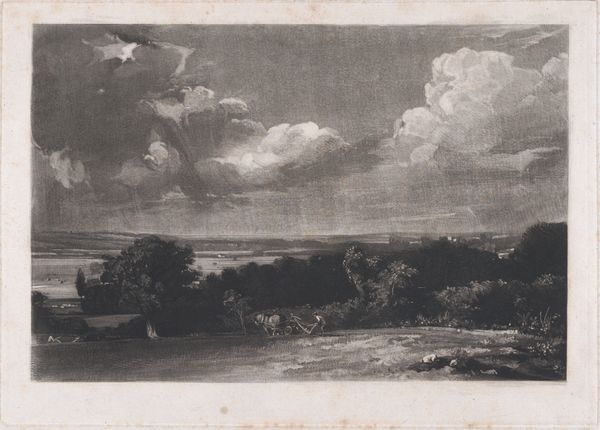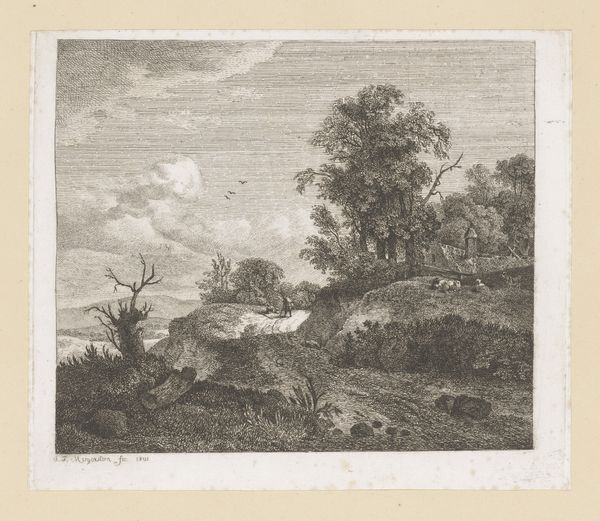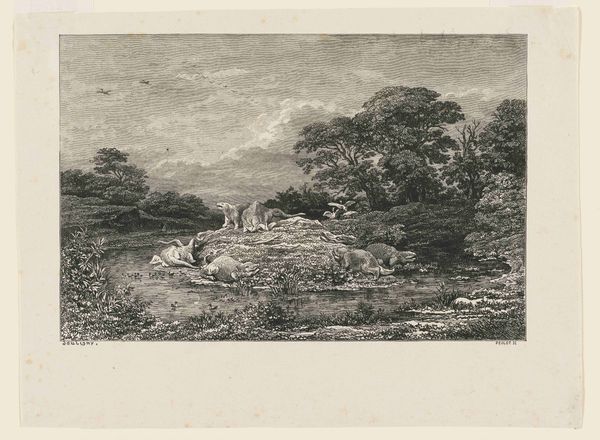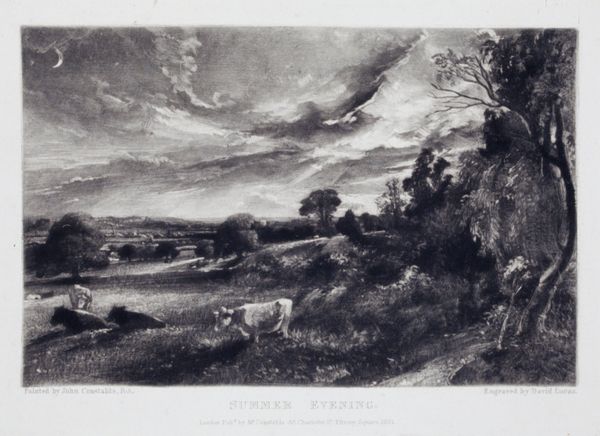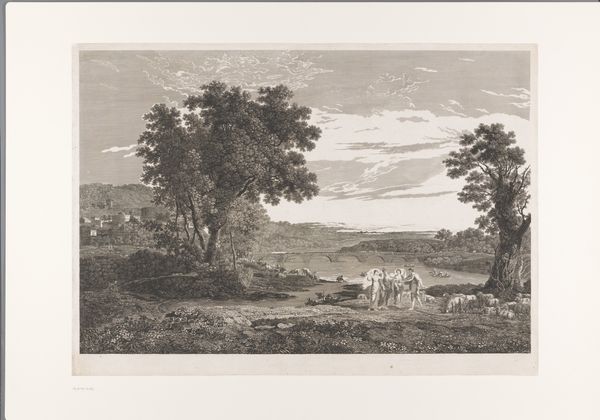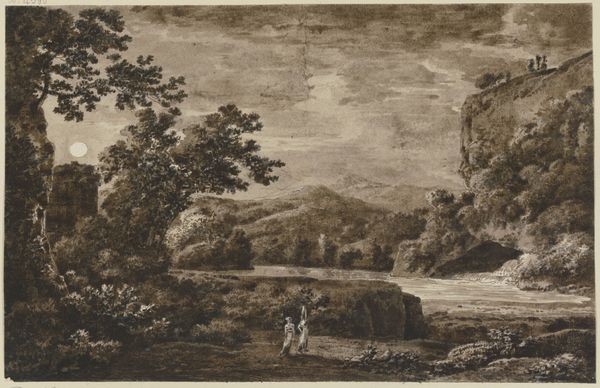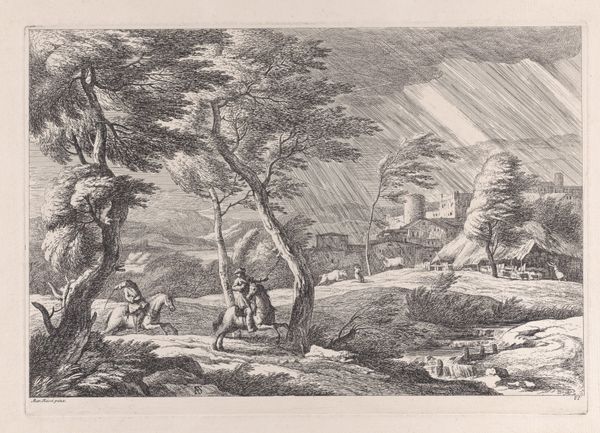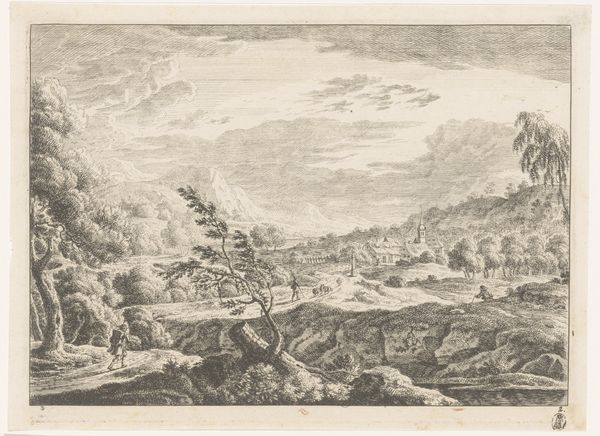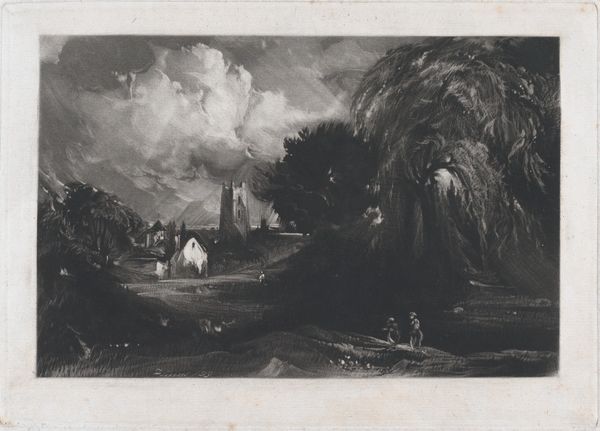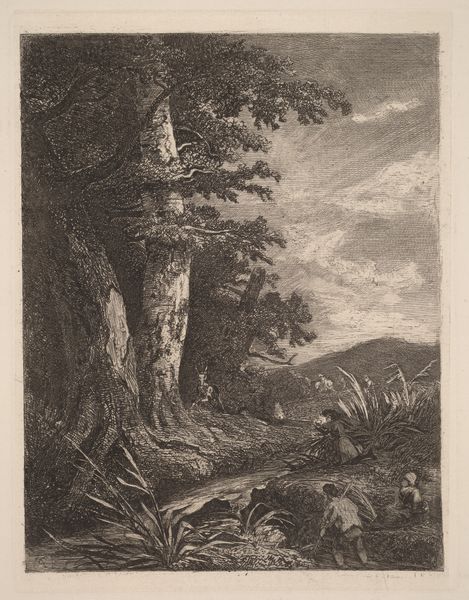
drawing, print, etching
#
drawing
# print
#
etching
#
landscape
#
romanticism
Dimensions: Image: 5 9/16 × 8 9/16 in. (14.1 × 21.7 cm) Plate: 7 × 9 15/16 in. (17.8 × 25.2 cm) Sheet: 8 9/16 × 12 1/16 in. (21.7 × 30.6 cm)
Copyright: Public Domain
Editor: So, this is David Lucas's "Summer Evening," dating from around 1829 to 1831. It's an etching and print. There's something about the landscape and dramatic sky that evokes a sense of longing, maybe even melancholy. How do you interpret this work? Curator: I see it as a carefully constructed image operating within a very specific art market. Landscapes, especially pastoral scenes like this, gained enormous popularity in the early 19th century, reflecting a romanticized view of rural life promoted by the gentry. Look how even the 'natural' arrangement of trees and grazing cattle is idealized and positioned. This wasn't simply documenting a summer evening; it was presenting an edited, consumable image of rural England that perpetuated a certain vision of its socio-political landscape. Editor: Consumable how? As in, the image itself became a commodity? Curator: Exactly! Prints like this became increasingly affordable and were displayed in middle-class homes. They reinforced ideas of nationhood, social hierarchy, and even the supposed 'natural' order. It's no accident the artist included workers to make it seem normal, peaceful and right. Editor: I hadn’t considered the social aspect before, or how these landscapes played into what people *wanted* to believe. The skies still feel quite romantic, though. Curator: True, the romantic elements served to make it emotionally appealing. That beauty was strategically employed, though. Consider how powerful such depictions were for shaping national identity. What is the legacy of that type of art in photography, television, and movies of our era? Editor: So, while seemingly a peaceful scene, this work reveals layers of social and political meaning, manufactured to be appealing while telling a very specific story. That is fascinating. I will have to be more critical about my immediate "feelings." Curator: Exactly. Consider this landscape and the historical implications and applications within and after the timeframe, you might start noticing this phenomenon is ever-present, everywhere.
Comments
No comments
Be the first to comment and join the conversation on the ultimate creative platform.
